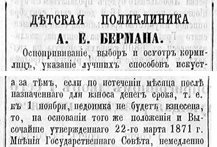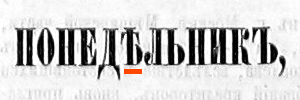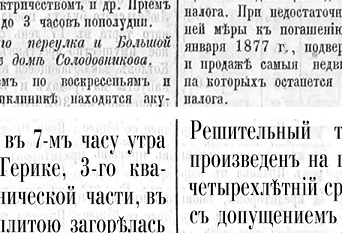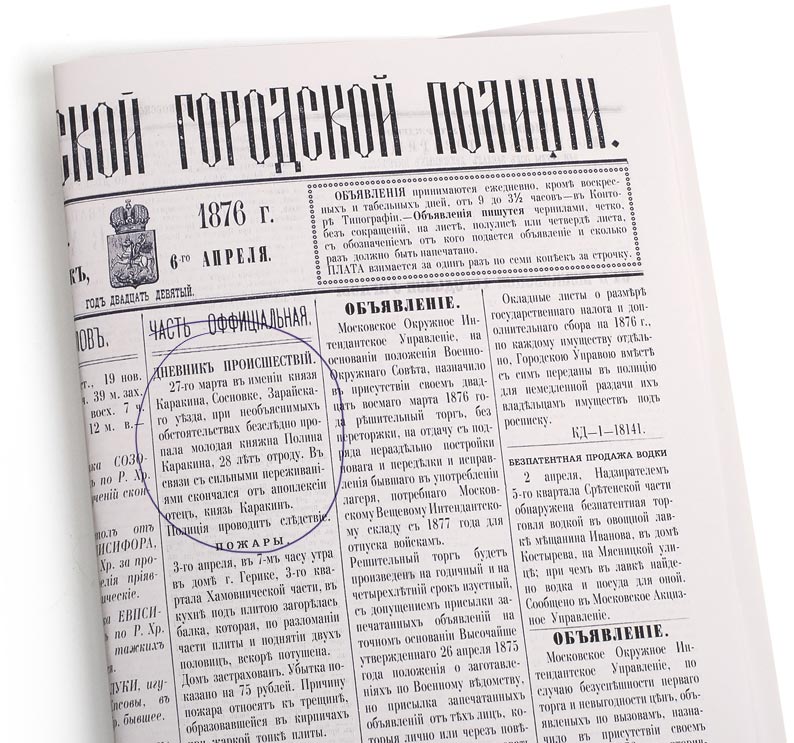Brought to your gracious attention
illustrations for Table Talk 1882 project
(Based on B. Akunin’s book of the same name)
|
Issued regularly 28 December, 2004 This part of the story deals with Russian prerevolutionary grammar. It may, of course, be of little interest to foreigners. But if you are willing to read it anyway, you are only welcome to satisfy your curiosity. Chapter TwoContents: Who read VMGP? — What kind of makeup is that? — …spell it with Ѣ. In this chapter the reader learns about “a mysterious disappearance of Polinka Karakina.” Let us have a “hard copy” to add more certainty. We begin.
Who read VMGP?
According to the story Polinka disappeared six years before the portrayed events when the grouses were lekking, which means the spring of 1876. What newspapers were popular back then? The first issue of “Mosckovsky telegraph” (Moscow Telegraph) is dated January 1881, and “Novosti dnya” (News of the Day) appeared even later (June 1883). What we have left is “Sovremennye izvestia” (Modern News) and “Vedomosti moskovskoy gorodskoy policii” (Moscow City Police Journal). But “Izvestia” edited by Gilyarov-Platonov, at the time a famous writer of political essays, though it was considered the most popular Moscow newspaper, focused more on political issues. And “Vedomosti” didn’t have neither loyal subscribers nor their own audience. Even the editor himself never read the newspaper, but it was sent to all the offices (for they were obliged to receive and keep it where it could be seen). Its agenda was government approved and was much more extensive than those of other newspapers of the time. It could “print anything that is of interest or of use to the dwellers.” It is this newspaper that we choose for publishing an announcement of Karakina’s disappearance. We go to Lenin State Library reading hall to get the original. Making photocopies of prerevolutionary issues is prohibited. We should be grateful we were allowed to scan the material. However, the quality leaves much to be desired. 
What kind of makeup is that?
The fragment was to be readable when viewed on the monitor. To achieve this we had to reproduce the initial makeup, find the most similar font and retype the columns introducing our own article. The original grid appeared to have columns of different width. This mismatch was probably cause by the aging of the wooden frame.  The newspaper used a high contrast typeface. We single out an identical one, edit it using Fontlab and add “Ѣ” symbols.  We made the digital version of the newspaper easier to read by using bigger type (one and a half the initial size) and increasing the leading and the column interval. 
…spell it with Ѣ.
When typing we consulted a spelling dictionary “containing over 50 000 words that can at times present difficulty while writing” that was published 15 August, 1903 by D. N. Seslavin. |
Narrated by Aleksandr Chuvilin |

|
(To be continued.) |